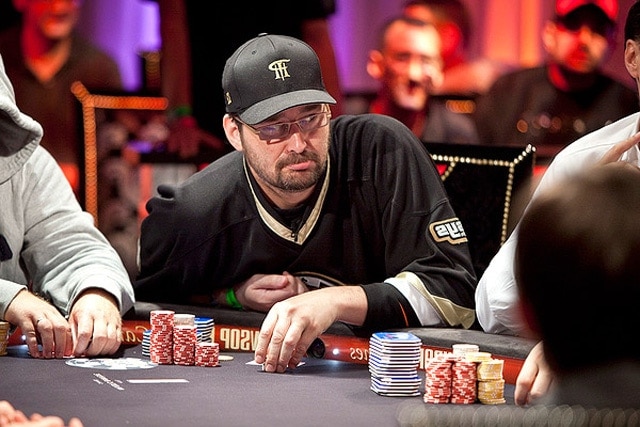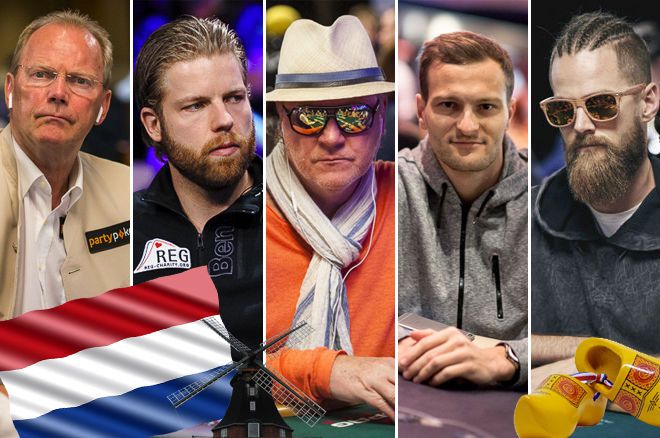I help you categorize your opponents into their respective player types based on stats and tendencies. I also give some easy-to-use exploits against each.
The participants on the show included both professional poker players and amateur players, including celebrity amateurs who have had some success in major tournaments, such as Jerry Buss, Sam Simon, Nick Cassavetes, and others. From these 100 million poker players only a handful will make it into the professional poker scene like Bryn Kenney or Daniel Negreanu. A player earns the right to call himself professional when his daily job is to play poker and can sustain all his economic needs from this practice. This requires learning, practice and patience.
Listen to this podcast episode #289:
You MUST Understand Player Types
“The money available to a player winning long term comes from other players’ willingness to put money into the pot with bad hands that a perfect player would not play.”
– Ed Miller in his incredible book, The Course
This is exactly why we must understand player types and assign each of our opponents to one of them.
When you’re profiling your opponents, you’re looking for weaknesses. When you see those weaknesses, you know exactly how to play against them to earn their chips. You can also selectively target the weakest players who are most likely to give you their chips.
“Attack weakness, avoid strength.”
– Ed Miller in his incredible book, The Course
You’re looking to play more hands versus weak players and avoid hands versus strong players. Battling good players can kill your profits. We’re all playing this game, at least in part, to make money. Since it’s easier to make money versus the weak, that is who you MUST go after. The key to going after them is to understand and spot each of the weak players around the table.
You must become an active observer when you’re not involved in the hand:
- If a player just open-raised from the Hijack, and it’s the first hand he’s played in 3 orbits, he’s likely a tight player who only plays the best hands.
- Maybe another player makes her 4th limp in a row… she’s likely a Fish.
- Now a different player 3bets then triple-barrels down the streets with J8s after flopping TP. Wow! You found a loose and aggressive player.
Because you’re paying attention, you’re able to categorize each of these players and now you can use some basic exploits against each.
The 4 Common Poker Player Types
We use two different tendencies to put players into one of the 4 player types.
Tight versus Loose
A tight player plays few hands (VPIP < 20%), and a loose player plays a lot of hands (VPIP > 20%). 20% VPIP is just the cutoff percentage. Of course, players can be ultra-tight at 5% or ultra-loose at 95%.
Passive versus Aggressive
A passive player doesn’t raise preflop that often (PFR < 15%) and an aggressive player raises a lot (PFR > 15%). Again, 15% is just the cutoff with the ultra-passive player having a PFR of 1% and the mega-aggressive player at 45%.
Loose-Passive
LOOSE = Plays lots of hands; PASSIVE = prefer making checks and call; they love to see flops; they stay in way too long with weak hands and draws; #1 targets at the table; if they raise post-flop, WATCH OUT!
AKA: Fish or Calling Stations
Common VPIP/PFR Stats: 22/6, 28/5, 45/9 (Mention video in show notes detailing VPIP & PFR)
Color Coding: Green
Characteristic #1: Passively plays very wide & weak ranges. Not positionally aware.
Exploit: Play ranges that dominate theirs and isolate them (as limpers or in the blinds) whenever +EV.
Characteristics #2: Generally losing players.
Poker Players Alliance
Exploit: Target them and play as many hands as possible in +EV spots!
Loose-Aggressive
LOOSE = Plays lots of hands, AGGRESSIVE = prefers bets and raises; can be a high variance loser; they use the power of position yet they might not be that positionally aware when it comes to starting hands; capable of spewing chips in bad bluffing spots.
AKA: LAG, Donk or Maniac
Common VPIP/PFR Stats: 24/18, 36/24, 55/35

Color Coding: Orange
Characteristic #1: Too much aggression with weak ranges. Open-raises, iso-raises and calls too much preflop.
Martin Zamani
Exploit: Play with hands at the top of their range, and strive for IP play.
Characteristic #2: Constantly applies pressure.
Exploit: ALWAYS gauge how well the board interacts with their range. Be willing to call wider with 2nd and 3rd pair when they can be bluffing worse.
Tight-Passive
TIGHT = Plays mostly strong hands, PASSIVE = prefer checks and calls (but sometimes they’re aggressive with few calling hands); quick to fold post-flop; beware their bets and raises.
AKA: TP, Rock or Nit
Common VPIP/PFR Stats: 11/9, 11/2, 7/3
Color Coding: Red
Characteristic #1: Strong hand selection & positionally aware. Folds too often preflop and raises only strong hands.
Exploit: Play a wider but still strong range when IP. Call their raises with hands that play well post-flop and can crack big hands (good playability).
Characteristic #2: Doesn’t often fold to 3bets and 3bet = the nuts.
Exploit: 3bet and 4bet with the best hands to get value from his tight range.
Tight-Aggressive
TIGHT = Plays mostly strong hands, AGGRESSIVE = prefers bets and raises; can be winning regs; multi-tabler; quick to fold most marginal spots post-flop and when OOP.
AKA: TAG, ABC or Reg

Common VPIP/PFR Stats: 12/10, 18/13
Color Coding: Yellow
Characteristic #1: Plays multiple-tables, so they’re selective, patient and they choose the best starting hands (small & value intensive range).
Exploit: Play strong hands against them, but speculative hands can crack their strong ranges.
Characteristic #2: Quick to fold weaker pairs and draws because they see little value in these hands.
Exploit: Bet and raise to earn post-flop pots, make sure your size hits their “pain threshold” so often at 2/3 pot or more.
Here’s my challenge to you for this episode: While you’re playing your next session, set a timer to go off every 10 minutes. When it does, pick a table and think about each player there and describe all you know about them – player types, weaknesses, how to exploit, etc. This will train you to profile your opponents and it’s a great way to test that you’re paying attention.
Now it’s your turn to take action and Scooby-dooby-doo something positive for your poker game.
Support the Show
Tunisianking, Dayne Dice, Nathan Yamuder, Richard Cheason and Rosemont Tony picked up PokerTracker 4 (get it here to support the show), the best poker tracking software. I love it and use it everyday! In appreciation, I sent each of them a copy of my Smart HUD for PT4. With an ever-growing database of hands to study and all the helpful features, PT4 is the go-to software for serious poker players.
Mark Fleming, Lois Thomas, Stephan Eck, Murry T., Massimo Gramegna, Stephen Diesner and Ole Engkrok bought the Smart HUD with a 1.5 hour webinar for PokerTracker 4. It’s the best online poker HUD in the business with every critical stat in the HUD and the 7 custom popups. This is what every online player needs to maximally exploit opponents.
The Poker Study Boot Camp Course was purchased by some seriously kaizen-minded poker peeps: Ram, Zeljko Arnautovic, Drew Dumpert, and Triumphnk. Thank you all so much. You’ve got your work cut out for you with this 29-day course, so good luck!
- Counting Outs and Making Profitable Calls - February 4, 2021
- Don’t Respect the Player, But Always Respect the Math! - January 28, 2021
- Curiosity Kills Your Winnings - January 21, 2021